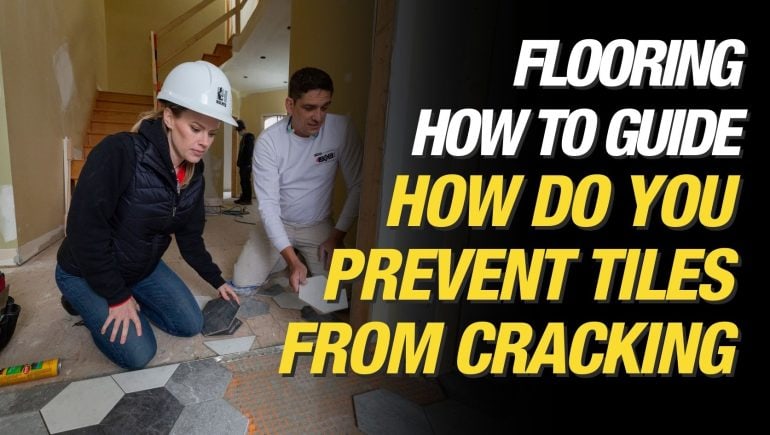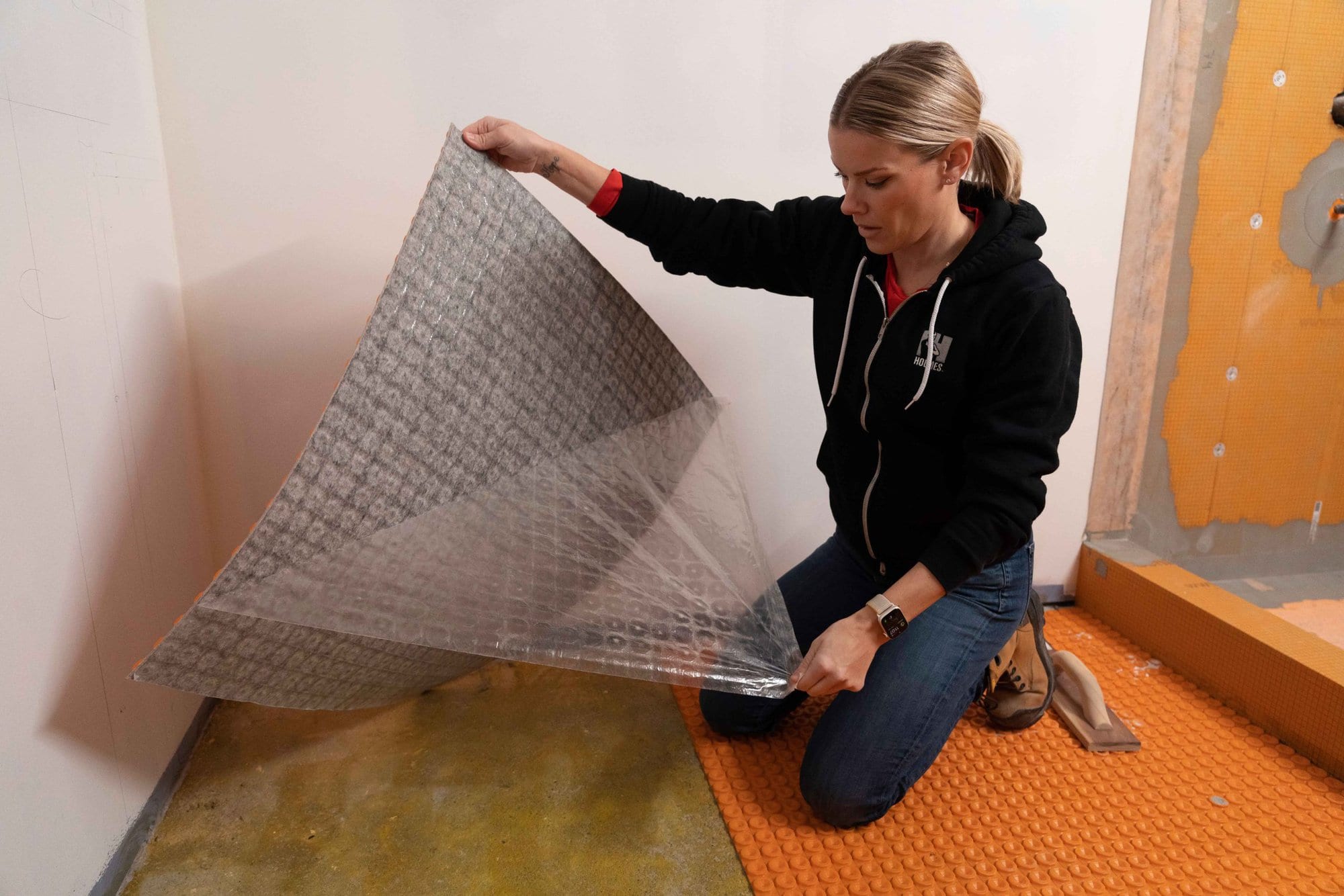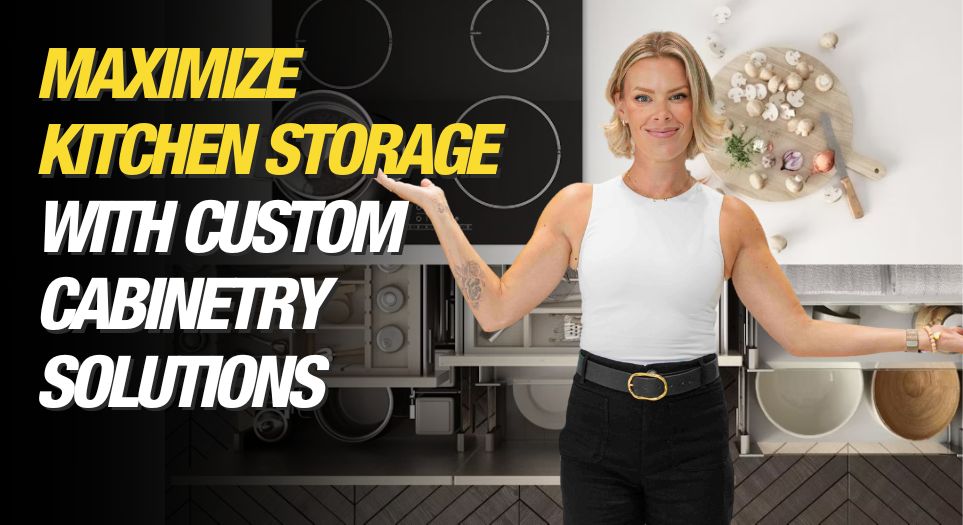I love my kitchen but it’s not large so it gets messy fast – add two growing young daughters, a husband and a cat – you have to stay organized....

How Do You Prevent Tiles From Cracking
By Mike Holmes
Mike’s Advice / Bathroom Renovation
Wednesday, April 12th, 2023 @ 2:04pm
Why Tiling Isn’t a DIY Job – How To Prevent Tiles From Popping Up
Let me start off by saying that tiling is not a DIY job. Installing tile requires experience and skill, not to mention the materials, supplies, and tools it takes to complete the job. Professional tile setters have spent years perfecting their art. Tiling is also time-consuming, and for amateurs, it will take that much longer —that’s not including correcting your mistakes which includes tiles cracking. That’s why it’s best to leave it to the pros.

My daughter, Sherry laying the tiles on one of our projects with JBG Tiles.
With that said, I always say it’s important to do your research and have an understanding of the work being done. So here’s my guide on how to prevent your tiles from cracking.
Why Do Tiles Crack or Pop Up?
Typically cracked tiles and grout lines are the result of incorrect installation. However, this can also occur due to extreme temperature changes in the substrate (the surface that the tiles have been laid on), carrying too much weight, or even something as simple as a heavy object being dropped on the tiles.
Heavy Object Dropped Causes a Chip or Crack in Tile
If the crack is found on only one isolated area or one tile, the crack is typically caused by a forceful blow or something heavy that has been dropped on the tile, like a pot or cast iron pan. The tile may also have a chip in it from the impact.
Tile Cracked from a Heavy Load
The thickness of the tile can also be a factor – tiles range from 6mm to 10 mm thick, which is ideal for most applications. However, most higher-end tiles are at least 10 mm thick.
Most tiles meet the breaking strength standard of 250-pound minimum, but there are lots of high-quality tiles that exceed this minimum. Higher is better. However, this rating is typically not printed on the tile box or datasheet, but if you call the manufacturer, they will be able to provide this information to you.
You Need a Stable and Level Surface
The surface that you lay tiles on needs to be stable and relatively even before installing any tile onto the subfloor. It also needs to be swept clean with no debris. The subfloor will expand and contract as you walk on it, especially if you have some structural issues, or your joists are spaced too widely apart.
How To Level An Uneven Floor
If your subfloor is uneven, in some circumstances you have the option to use a floor levelling mixture. We use Sika Level-125 self-leveller and it will bound to almost any surface. You can lay vinyl, tile, hardwood, and even carpet. Not only does it level out the area being tiled, but it also gets rid of dips or imperfections in the floor and will also prevent tile and grout from cracking and squeaking!

We use Sika Level-125 self-leveller on all our projects. It’s great, easy to use, quick to cure, and will bound to almost any surface.
The Sika Level-125 uses a primer, that can be applied with a roller and dries in about 1 hour. You know it’s drying as the colour changes from blue to translucent. Once it’s dry you are ready to add your self-levelling mixture.
The Sika Level-125 has a high-flow fluidity which means you can apply it by hand or by a pump. And the floor is ready to be tiled in 24 hrs.
RELATED
Check With An Engineer Or Architect If It’s a Structural Issue
Also, if you have an older or century home and your joists are not correctly spaced or supported, the floor may sag or become uneven, which can also result in loose or cracked tiles. You may have to consult with a structural engineer and get a contractor to either replace the problem joists or do something called sistering or reinforcing an existing joist.
Sistering, or placing another joist next to the weak one, is a proven method of strengthening joists. Sistering joists or a beam can lessen the bouncing that occurs when you walk across a floor. The method also aids in supporting joists that are too small or broken. For the sister joist, you can use either 3/4-inch plywood strips or framing lumber. But remember, this needs to be done by a professional contractor.
Why do tiles suddenly pop up?
As mentioned before, the subfloor or the substrate you will lay your tiles on needs to be level. If the subfloor is uneven or not securely attached to the floor joists then the mortar and tile adhesive don’t set correctly and can make the tiles pop up!

Schluter FAST-SET is a specialized modified rapid-setting thin-set mortar that is ready to grout in 4 hours, which is ideal for fast-track projects. It is also suitable for use both under and over DITRA and KERDI
RELATED
The Magic Of 3 Thin-set Mortars and How To Use Thin Set Mortar
Is it OK to tile or put flooring over an existing floor?
In my books, that’s a big NO! Never lay a new floor over an existing floor. Why? Because you want your flooring transitions to be smooth in between each room. When you lay new flooring over old flooring, you’ll end up with transitions that are uneven and this will be a tripping hazard.
The goal of a floor transition is to preserve the edges of your flooring from wear and tear and foot activity in addition to creating a cleaner-looking seam between various types of flooring.
Another reason that you shouldn’t install tile over tile is that not all adhesives adhere to your old tile and your new tile, which could be a challenge with glazed or polished surfaces. Plus, you are adding extra weight and height to the surface of the floor – this is true for both wall tiles and floor tiles.
And lastly, there is the risk that tiles will lift due to air pockets or water getting trapped between the layers which will cause rot, mould and damage, and your tiles and grout will likely crack!
RELATED
Ceramic, Porcelain, and Natural Stone Are Ideal for Heated Floors
Ceramic, porcelain, or natural stone tiles are all excellent temperature conductors and work perfectly when installing an in-floor heating system.
Ditra-Heat is a product my team and I use in every tile floor project we do. It’s easy to install, and a really simple way to ensure your tile floor lasts for a long time.

Don’t be afraid to have a little fun with your floor tile. Check out the black and white starburst tiled floor!
RELATED
Proper Tile Installation
My crew and I only use electric in-floor warming systems with an uncoupling membrane. It offers waterproof and vapour barrier properties when properly installed, ideal for wet zones like bathrooms, kitchens, entranceways, mud rooms, and laundry rooms.
I always use Schluter Ditra-Heat which comes installed with dimples that allow you to click in the wiring easily and lets you adjust for going around toilets and fixtures.

We install Schluter products on all our jobs. It helps make sure your bathroom is watertight and that your tiles won’t crack. They’re also great for in-floor warming systems.
RELATED
What Is Schluter Ditra-Heat?
Ditra-Heat is an uncoupling membrane and floor warming system in one. It helps minimize floor movement and is essential to prevent tile from cracking, plus it allows you to bring your tile floor to a whole new level by adding in heat. Heated floors are made simple and are not just for spas and luxury homes. Plus, Ditra-Heat allows you to install the heated floor sections only in areas that you need heat, like areas in and around the tub and vanity area, but not under the vanity which is a waste of effort and energy.
Heated floors are particularly susceptible to movement and the uncoupling membrane prevents movement and stress in the subfloor from transferring to the tile or stone floor above, preventing your tiles or grout from cracking.
New Ditra-Heat Peel & Stick
Ditra-Heat is an awesome product, but these days I’ve been using the new DITRA-HEAT-PS — a Peel and Stick heated membrane. DITRA-HEAT-PS has the same uncoupling technology as Ditra to prevent tiles and grout cracking but with the additional benefit of heat and easy peel and stick installation. This peel-and-stick version helps speed up the installation and requires less labour, so I love that innovation.

My daughter, Sherry, installing Schluter Ditra-Heat Peel and Stick on one of our projects
RELATED:
How Do I know I’m getting a Qualified Experienced Tile Setter?
According to Employment Canada, a tile setter is required to have a three or four-year apprenticeship program or a combination of at least three years of experience, and a series of accredited tile-setting courses. However, a trade certification for tile setters is compulsory in Quebec, but voluntary in Newfoundland and Labrador, Nova Scotia, Prince Edward Island, New Brunswick, Ontario, Saskatchewan, Alberta, and British Columbia.

Just like hiring any tradesperson or contractor, do your homework, and ask for their credentials, work experience, and references.
Just like hiring any tradesperson or contractor, do your homework, and ask for their credentials, work experience, and references. You should also ask to see their portfolio and physically check them out. How often do they improve their skills? Do they invest in accredited tile setter courses and do they belong to any associations? In Canada, there is the Marble Association of Canada (TTMAC) and the Tile Council of North America (TCNA) in the US.
Schluter Systems has a wide variety of workshops and training programs and seminars for tile professionals – it’s important to keep up to date on the latest methods and products. All my crew has taken several workshops – which I think is important for personal and professional growth. It also keeps contractors on top of doing things right!

Micheal installing Schluter Ditra Heat on Holmes Family Rescue.
RELATED
When tiled floors are installed properly using the right materials you will enjoy them for years to come. However, when you don’t follow industry and manufacturer guidelines and attempt to do it yourself, you can run into trouble. Do your research, take your time, and hire a pro!
READ NEXT
What Is The Best Flooring For A Kitchen?









